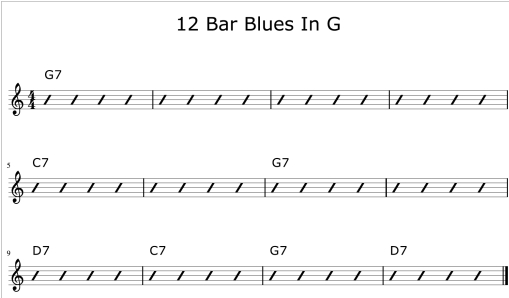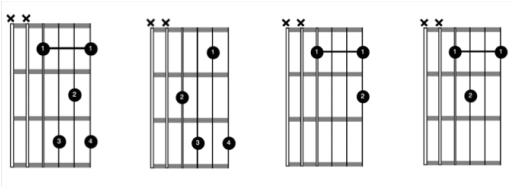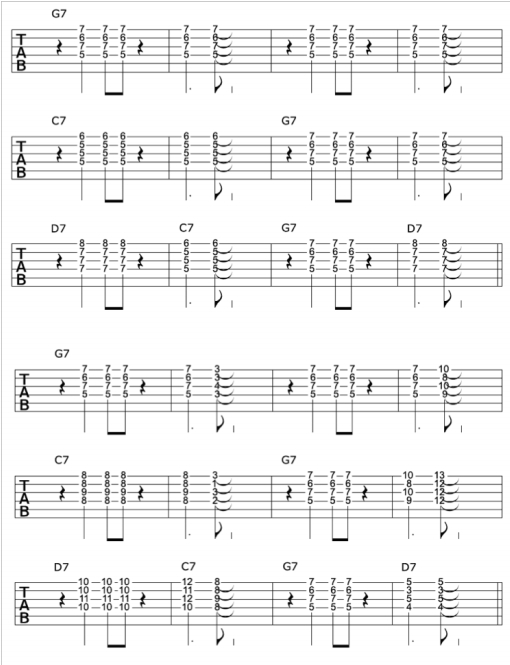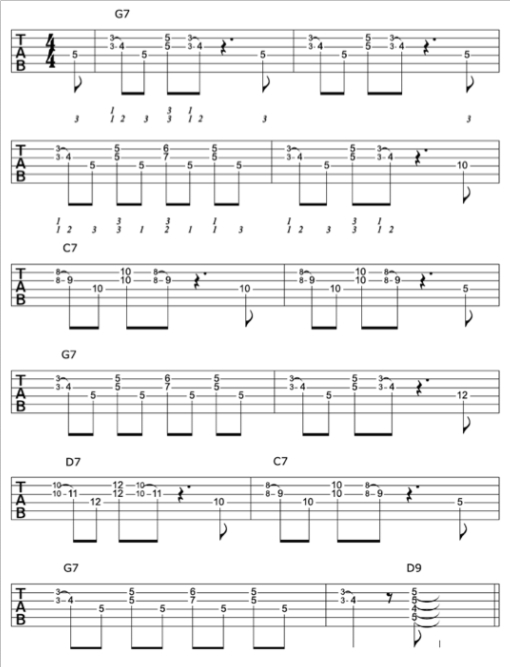As a guitar player you need to be able to find your way around a 12 bar blues, even if you don't consider yourself to be a blues player. Blues is the universal language amongst musicians, and it's inevitable that you will be in situations often where you are spontaneously jamming a blues, sometimes with somebody you may have just met.
To have the ability to create music on the spot with no preparation at all, is a great feeling and a lot of fun! I've been in this situation many times before and it's often where I will do some of my best playing.
So before you run off and start practicing your soloing and improvisational skills, stop and consider that an equally important part of being able to hold your own when playing through a blues is the rhythm side of things. Too much focus is given to soloing and not nearly enough to rhythm. As a result you will often hear a guitar player soloing at a high level and playing rhythm guitar on a much lower level.
This is an in-balance that needs to be fixed, as we are playing rhythm guitar parts for the majority of the time in most musical situations. So rather than resorting to the same old chords and strumming patterns typically used, as you wait out the time until you next solo, let's massively improve our rhythm guitar playing skills.
Following are three cool ways to approach the rhythm of a 12 bar blues that you will be able to take into your next jam and blow everyone away with. Not only will you sound much better, but those you are playing with will too, as the better the rhythm playing is, the better the soloing will sound.
Most guitarists should be familiar with the basic 12 bar blues form. Here it is:

Despite being familiar with the above progression, many guitar players will struggle to do much more than strum basic chords as they play through it. This is of course ok to do, however it will get boring and uninspiring pretty quickly for not just yourself, but those playing with you too. There is so much more you could be doing to keep things interesting and fresh.
The thing to realise is, that playing the rhythm part to a blues is not time you spend waiting until your next solo, strumming the same old chords you always use. It's time to be inventive, to improvise, and inspire whoever is soloing over your playing, so they can feed off what you are doing and play way above their usual standard.
Block chords are great for playing the rhythm part of a blues progression. I remember when I first came across these guys many years ago and literally applying them to everything and anything I could. I loved the possibilities I could do with them and they were the first kind of chord I really understood after learning open and bar chords.
Here are some block chord shapes we will be using:

And here they are over our 12 bar blues progression in G:

These chords are sometimes referred to as 4, 3, 2, 1 voicing's in relation to the strings they fall on. In the example above I have extended the 12 bar progression to two chorus' so I can demonstrate their use to you a little more.
In the first chorus I am only changing the block chord with the actual change in the progression, however in the second chorus you will notice I change between block chord shapes even when the chord itself doesn't change. This sounds cool as you are creating movement over a static chord, and is one of the many things you can do with block chords.
Jazz and blues are closely related, and the styles actually cross over with what is commonly known as a jazz blues progression. This is also 12 bars in length and typically uses more chords than your standard 12 bar blues. I love adopting this approach when playing the rhythm part to a blues. It really brings out some cool sounds when you solo over it.
Here is a 12 bar jazz blues progression in our key of G:

As you can see and hear there are more chords in our example above, however we are playing the same 12 bar form. In the jazz world it is very common to substitute chords into a progression. While it's beyond this article to go into detail regarding this, the above progression is a great way to introduce some more chords you can use in your rhythm guitar playing. This is true not just for a blues but for other areas of your playing too.
With that being said, learn the example above and start getting some of these chords into your ears and your fingers so they become part of your rhythm guitar playing arsenal you can draw from when playing/jamming.
Regarding the actual rhythm pattern used in in this example, it's known as the Charleston pattern. This originates from a popular dance of the 1920's known as the Charleston dance. In addition to the chords you play, the rhythm you apply to them is of upmost importance too, so keep this in consideration when creating and playing your rhythm guitar parts.
One alternative approach to strumming chords all the time is to use riffs in your blues rhythm playing. These are known as rhythm riffs funny enough, and are great for creating a part that will work well in line with someone improvising over them. Here is our 12 bar blues utilising this approach:

This particular rhythm riff is based around the root 6 bar chord form and targets the 3rd of each chord. The riff essentially remains the same but changes position as the chord changes in the progression. There are many variations you can do of this type of rhythm riff. You might come up with some yourself, but focus on getting this one down first.
Your first step is to get each example down above. This may take a little time, which is fine, just don't rush it. Once you have however, there is more you should and can do.
I purposely kept the examples in this article in the same key. This was so you could more easily connect them together. Once you have these rhythm approaches down, you then want to apply and connect them together. This is vitally important if you want to make anything in this article part of your own guitar playing.
I can't stress this point enough. You will inadvertently come up with your own variations of blues rhythm parts which is the whole point. Your aim is to be able to play and improvise through a blues coming up with varying rhythm parts as you progress from one chorus to another.
Become "that" player who everybody wants to jam with by learning how to play rhythm guitar on your acoustic.
Specializing in online acoustic guitar lessons, Simon Candy is based in Melbourne, Australia where he runs his own guitar school.